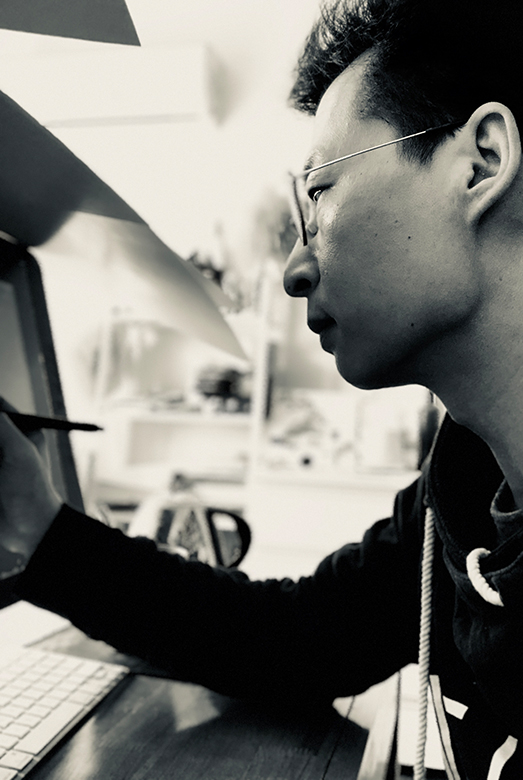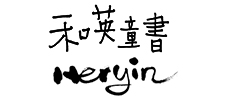Press

Interview with Caver Zhang, lecturer, illustrator, picture book author
Bio: Caver Zhang
1. What have you been busy with lately?
Lately, I would work very, very hard at work and then rush home for a meal so that I can be with my little girl for a while. When I finish my meal, I would bid her goodbye. After I see her wave her little hand, and listen to her utter a few sounds at me, I would hurry back to work ......
2. When did you start creating illustrated books? Has it been smooth sailing?
I’ve always felt that I haven’t really started to create illustrated books. Perhaps it’s because it’s so hard. I’m not entirely certain that I really know how to do it. I find it really difficult.
3. Can you tell us a bit about the creation process of A Coin? Did you receive more commissioned works after winning the Grand Award at the 2017 Frankfurter Buchmesse “Global Illustration Award”?
That’s because it’s a famous poem by Mr Yu Kwang-chung. I was very nervous when I was doing the illustration, to be honest. I wasn’t all that worried about technique. Rather, I was somewhat perplexed and hesitant about the way it is to be presented and how to handle the ambience. I then began to have a sense of the overall feel of it. When I consolidated the elements in my imagination, I realized there was great aura in Mr Yu’s poetry. The list of elements did not adequately reflect that deep and implicit warmth. In fact, I even thought of withdrawing from the project at one point in time because I was worried that my own ability, or lack thereof, would not do justice to the presentation of the entire book. Fortunately, Editor-in-Chief Chou Yih-fen did not give up on me, and helped me adjust my mindset gradually. I’m so thankful to have been able to persevere to the end, and complete the work. All sorts of problems cropped up because of my ability, but I’ve really done the best I could.
After I won the award, I felt overawed. I kept thinking it really shouldn’t be me. Thanks to this award, I have received well wishes and attention from many seniors, teachers and peers, and have come into contact with many industry seniors and VIPs. I’m busier than before to be sure ...... In any case, I felt that Lady Luck smiled on me and I’m so fortunate. I thank all those who helped me find fortune.
4. Why do you think children’s illustrated books are so popular in China?
Actually, I don't really understand big picture things, but allow me to twaddle for a moment. Perhaps because China’s soft power has risen now, so on the basis of having met certain material needs, how to meet the spiritual needs of the next generation has become a new area of concern for many families. Therefore, demand for good picture books has flourished. In addition, given more frequent cultural exchanges, more excellent picture books have entered the market. Everyone is able to read better things. Readers have also become increasingly knowledgeable about picture books, and with a greater degree of understanding, acceptance will naturally increase as well. I suppose this is a process of mutual reinforcement.
5. Other than illustrated books, are you also involve in the creation of animation, videos or others?
Other than teaching on a regular basis, I would study the creation of illustrated books and illustrations. Friends have also asked me to draw settings for animated movies as well as posters, but those are even more of a spare-time work. Hopefully, these won’t feel like spare-time work someday.
6. What’s your view on “visual storytelling”?
I’m not sure if I understand this correctly. Let me assume, for the moment, that this means visual narrative. Visual narrative is an important academic subject as we move from a text era to a pictorial era. In visual narrative, narration takes place with the help of visuals, implying that the description of things may be seen. The process from reading to watching literary works is the process of visualization. Readers convert the words authors use for description into images based on their imagination. Correspondingly, and specifically in the creation of imagery, visual narrative is primarily expressed as an organic combination of the pictorial element, the objects to be represented, time, space, scenes, environmental background and other visual symbols that forms a logical structure and representation. In the creation of picture books, which looks to integrate text and pictures, this sort of narrative model, which uses visual presentation as the subject, is able to flesh out the form and richness of “meaning” and “image” expressed in picture books, and enhance the depth of visual information communication. What’s more, it also presents more possibilities in the relationship between image and text in terms of intuition, poetry and emotion. With the help of visual construction, stories come alive, creating an interactive space with readers. As a creator, meeting readers in a “visible story” is exciting.
Caver Zhang will be speaking at the StoryDrive conference in Beijing (28 May - 1 June 2018).






























